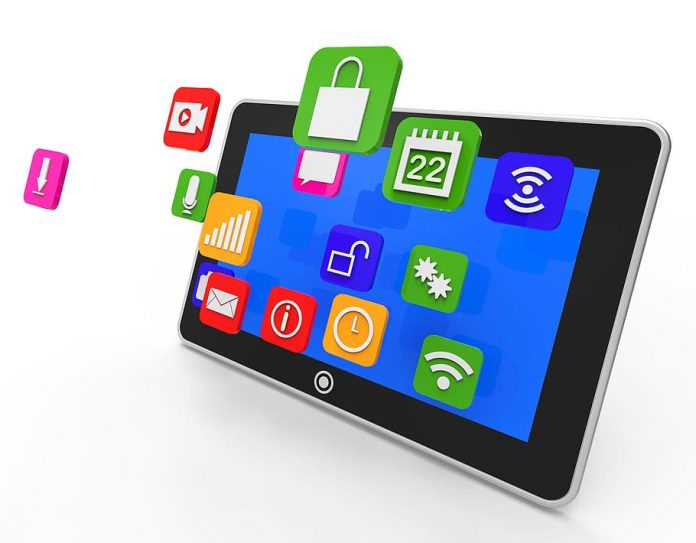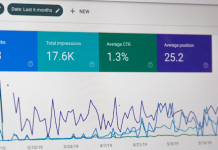Selecting the best application software for personal as well as business use is mandatory. Doing so will enhance the efficiency and dynamism of the entire business process. Now, it is also important to have an understanding of the concept of application software. Otherwise, you may have to face problems such as productivity loss, increase in cost, wastage of time, and resources, and so on. So, in this article, we will discuss application software examples and several other details about the same. also, application software is widely available in two different forms. They are-
- Custom app builds
- Readymade apps
Table of Contents
Definition of application software
Before getting on with the major application software examples, let us take a look at what it is in brief. Well, by application software we mean simple computer programs performing various functions. Such functions may be personal, business-related, or educational. Every single program is developed in a way that it can help the user to accomplish some task. The task can be anything related to productivity, communication, or creativity.
Functions of application software
Application software is created and developed in a way that they can accomplish and carry out several functions. Out of all the functions, below-mentioned are the major ones-
- Managing information
- Calculating figures
- Manipulating data
- Coordinating resources
- Constructing visuals
- List of the top ERP systems -Compare and Research
Application software examples
The most popular application software examples include the ones that millions of people around the world are using every day. Such examples include-
- Microsoft group of products (Excel, office, PowerPoint, Word, Outlook, and more)
- Mobile application software examples such as Skype (online communication at a real-time basis), Pandora (music application)
- Slack (for group or team collaboration)
Business application software examples
The business applications that we use every day for a vital part of the wide concept of application software. Such programs and applications are created and developed in a way that they can easily carry out several functions. As a result, there is an enhancement of effectiveness, efficiency, and accuracy of all operations. All the goals related to business software are measurable such as enhancing production volume and saving production time.
Check out the below-mentioned list of business applications that are widely used by organizations globally:
- ERP (Enterprise Resource Planning)
- Educational software
- CRM (Customer Relationship Management)
- Time Management
- Project Management
- Scheduling software
- BPM (Business Process Management)
- Resource Management
- Word Processor
- Database
- Spreadsheet
Let us now check out in brief, all of these business application software examples:
Enterprise Resource Planning (ERP)
The ERP (Enterprise Resource Planning) is one type of software that accomplishes business goals effortlessly. The software is accessible via a bunch of compact applications. Organizations over the world mainly use ERP to solicit, analyze, review, manipulate, and store data related to business operations.
Educational software
It is very easy to define educational application software examples. Simply saying, these are the software that organizations use to teach new and more innovative content, processes, and concepts to students and employees.
Customer Relationship Management (CRM)
The CRM (Customer Relationship Management) is one type of software that accomplishes business goals effortlessly. The software is accessible via a bunch of compact applications. Organizations over the world mainly use ERP to solicit, analyze, review, manipulate, and store data related to business operations. Along with the basic functions, CRM also manages communication customers, and keep a check on partner relationships.
Time management
Any kind of time management software is a vital part of the functioning of any business organization. It is because with the help of these you can measure the quality of usage of all digital systems of the organization. For example, management can keep a track of productive hours of an employee.
Project management
Software related to project management is those which are created and designed to do the planning and execution of various projects. This software can also work on research management that is in connection with respective projects. A project management software altogether helps users in functions such as reporting results, scheduling, documenting progress, assigning tasks, managing costs, and budgets, and more.
Scheduling software
Proper scheduling software is a part of every organization and business process. It helps the management and employees to carry out certain functions. For example, allocation of resources, assigning shifts and also measuring work efficiency, and payments.
Business Process Management (BPM)
BPM software is what every organization requires to carry out and accomplish two of the most important functions. They are the automation and rapid development of strategic processes. Such software usually utilizes web-based modeling, simple interface, and proper rule creation to quicken the work pace of the business.
A BPM software is more popularly created and developed for mobile phones and offers ultimate operational visibility. Business Process Management software is also helpful when it comes to other work. For example, analyzing and managing complex data, enterprise, processes, and content.
Resource Management
Such software usually carries out all the work related to the management of resources and multiple projects. It also ensures that all data and information are distributed properly on a real-time basis.
Word processor
The Word Processor is one of those types of software that helps a user create, print, format, and edit new or previously-written documents.
Database
A digital data arsenal that is built by a user is known as a database. It helps to gain access, update, and review significant information and data in a coherent and rapid pattern.
Spreadsheet
A spreadsheet is a computer application that shows any pattern of information or data in a grid format. It allows the user to manipulate and enter new data into the grids too. Besides, you can insert formulae for several accounting functions too.
App vs. application – how are they different?
Well, no app is different from an application although they are often mistaken for each other. An app is created and developed to carry out a single function. Therefore, it is capable of accomplishing one goal at a time. On the other hand, an application is a kind of software that is capable of performing several functions simultaneously.
Simply speaking, if an app crashes, there will be minimum disruption in the operational process. However, if an application crashes, the entire process will get disrupted. So, if you rate them based on business importance, an application will, of course, steal the show. Also, apps are mainly developed for personal use on mobile devices. However, an application is usually compatible with several devices. Let’s sum it up in the following way:
App
- Single-purpose
- Mainly for personal use
- Does not hold much importance for business operations
- It is a mobile-first
Application
- Multi-purpose
- Mainly for personal as well as business use
- Vital for business operations
- Compatible with several devices
Premise vs. hosted
Premise application software, as the name suggests is established on the premises of an organization. We mean that the entire implementation process takes place in the physical location. As a result, there is hardware leveraging, IT infrastructure, as well as organizational support. The IT department of the organization is responsible for the maintenance and troubleshooting of the software.
Also, known as SaaS or Software-as-a-Service, a hosted software application is delivered, owned, and managed via the Cloud from any remote location. The service provider is usually a completely different entity than that of the organization. Most of the service providers obtain a license for legal operational dealings. In this case, an organization has to pay for the service per user or in a subscription pattern.
There is an advantage of the on-premise software application over the hosted type. The former can get quick customizations based on individual organizational requirements. On the other hand, hosted software applications function on a generic basis allowing users to scale-up rapidly.
Let’s sum it up in the following way:
On-Premise
- Implementation on the location
- license fees
- more customizable
Hosted
- Controlled remotely
- Per-user payment or subscription pattern
- Scales more rapidly
Application software vs. Application platform
An application software refers to end-result programs that can be divided into two different classes. The two classes or divisions are systems software and application software. The system software is responsible for providing a good operating system along with utilities. It will further enable application software like database programs, web browsers, spreadsheets, and more.
A good application platform will provide service to any application. The entire set comprises special tools on which an application depends on functioning purpose. If you take a look at the virtual scenario, it becomes clear that applications always depends on different software for proper functioning. Only then will application travel between database management and the cloud. The software group together is known as a single application platform.
A proper application platform must support any application irrespective of the style or pattern. For example, it may be a single-user platform or a multiple-user one. The basic services that you can include while discussing application platforms are- operating system, development tools, execution and cloud services, and data management.
Let’s sum it up in the following way:
Application software
- One end-user program
- Spreadsheets, database programs, web browsers, and more
Application platform
- Multiple end-user programs
- Supports not individual, but groups of services
Selecting the best application software
When you are trying to decide on the best solution for the organization, the first step should be a thorough needs assessment. During this, you will have to obtain feedback from colleagues, managers, providers, and partners. The first question should be about what should be the goal of the application software that you want to implement. There should be a detailed solution to the impacts of the software on the target user and audience.
The below-mentioned are a few things that you should consider while carrying out the needs assessment.
- Functionality needed
- Return and pricing on investment
- Implementation
- Global expertise
- IT infrastructure
- Support
Implementation
You must have solid control over the process of implementation, which includes the entire rolling out of the solution. You must also analyze well in advance about after-support, long and short-term success, and everything else before putting your signatures on the final document.
Best application software examples
The following list will tell you about the ten most commonly used application programs.
MS Word
Created in 1983, MS Word is simple word-processing application software. You can install this application in any device such as computers, cell phones, tablets, and whatever supports it. You can avail of several tools and functions when you are working on MS Word.
MS Access
MS Access is a vital part of the database software management of any organization. The following are the seven major functions of MS Access.
- Tables
- Modules
- Relationships
- Macros
- Queries
- Reports
- Forms
MS Excel
MS Excel or Microsoft Excel is spreadsheet-oriented application software. It utilizes advanced technology that can detect your patterns and data and finally organize them. You can create forms as well as perform any type of calculations. You can also set macros for the fast working of the application.
Firefox
Firefox is a fantastic web browser that is developed in a way that it can protect essential data and information. There are efficient pop-up blockers and advanced browsing features too. As a result, you can use Firefox for all big and small projects.
Safari
Safari is another amazing web browser that was developed by Apple Inc. It is therefore compatible with all versions and models of iPhones and iPads. There are in-built privacy barriers that will protect your data from any other device in the same area.
Chrome
Chrome is one of the most popular web browsers that is used all across the world. The main advantage is that Chrome is compatible with almost all operating systems available. Also, working on Chrome is effortless and fast.
AutoCAD
AutoCAD is designing application software, using which you can develop several designs. It was initially used only on graphic-installed microcomputers. However, now you can install the application is every operating system.
MS PowerPoint
MS or Microsoft PowerPoint is an application that makes custom presentations easier. You can also create, view, and share information using the in-built options and tools.
WordPad
Found on almost all Microsoft gadgets, this application is one of the simplest. You can effortlessly arrange and finalize draft information here.
Apple Numbers
Similar to MS Excel, Apple Numbers is the version of the same application that can be used only on Apple platforms.
Final thoughts
Application software is a vital part of any business organization and also for personal use. So, here you have all the basics that you must know about the same.








